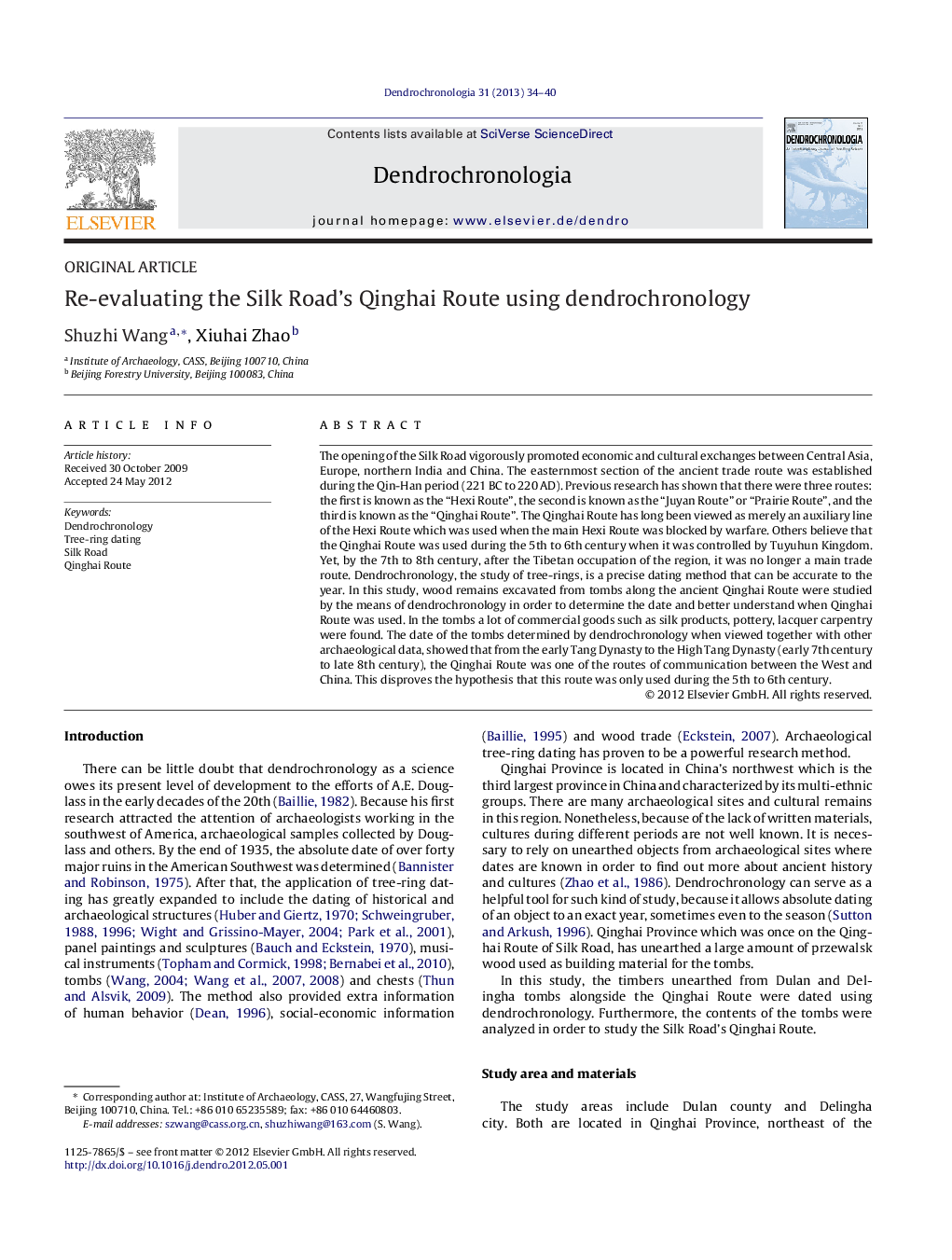| Article ID | Journal | Published Year | Pages | File Type |
|---|---|---|---|---|
| 85629 | Dendrochronologia | 2013 | 7 Pages |
The opening of the Silk Road vigorously promoted economic and cultural exchanges between Central Asia, Europe, northern India and China. The easternmost section of the ancient trade route was established during the Qin-Han period (221 BC to 220 AD). Previous research has shown that there were three routes: the first is known as the “Hexi Route”, the second is known as the “Juyan Route” or “Prairie Route”, and the third is known as the “Qinghai Route”. The Qinghai Route has long been viewed as merely an auxiliary line of the Hexi Route which was used when the main Hexi Route was blocked by warfare. Others believe that the Qinghai Route was used during the 5th to 6th century when it was controlled by Tuyuhun Kingdom. Yet, by the 7th to 8th century, after the Tibetan occupation of the region, it was no longer a main trade route. Dendrochronology, the study of tree-rings, is a precise dating method that can be accurate to the year. In this study, wood remains excavated from tombs along the ancient Qinghai Route were studied by the means of dendrochronology in order to determine the date and better understand when Qinghai Route was used. In the tombs a lot of commercial goods such as silk products, pottery, lacquer carpentry were found. The date of the tombs determined by dendrochronology when viewed together with other archaeological data, showed that from the early Tang Dynasty to the High Tang Dynasty (early 7th century to late 8th century), the Qinghai Route was one of the routes of communication between the West and China. This disproves the hypothesis that this route was only used during the 5th to 6th century.
